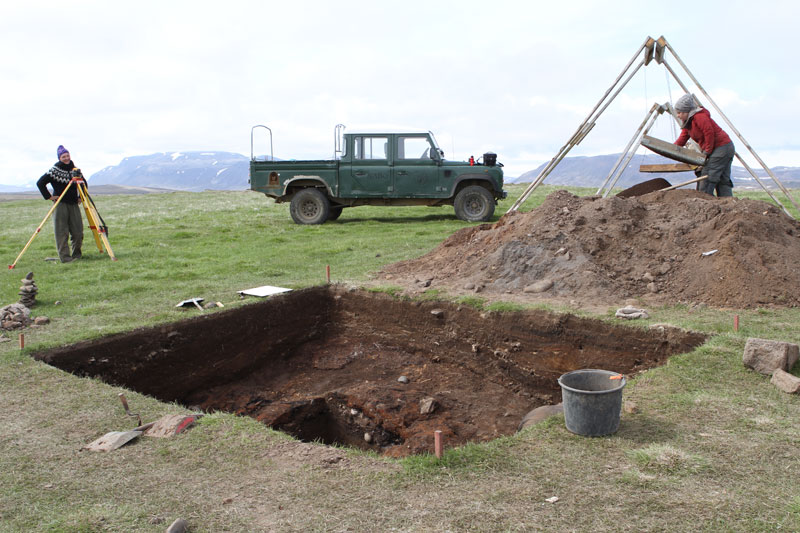Excavations at the ancient farm of Hjalmarvik are
providing detailed insights into the ways Icelanders
adapted to changing climatic conditions. (Zach Zorich)
Stefán Ólafsson of the Icelandic Archaeological Institute and Céline Dupont Hébert of Laval University, Quebec City, are the crew chiefs of a team of archaeologists with the unglamorous job of excavating a garbage dump at Hjalmarvik, an ancient farm on the northeastern coast of Iceland. Their approximately 9-by-12-foot excavation trench sits just outside what was a sod-walled farmhouse that may date back to the years shortly after 871, when Iceland was first settled by groups of Vikings from Norway. Today, the remains of the house are no more than a flat spot on the ground overlooking a small bay a few hundred yards to the west. The excavation of the garbage dump, or midden, is revealing a detailed record of life at the farm and provides clues to how its residents handled the severe challenges the island faced during an extended period of climatic disruption.
The walls of the trench are striped with orange peat ash, probably discarded when the hearth inside the house was cleaned. Although the crew has uncovered interesting whalebone carvings—some decorated with images and others that were used as gaming pieces—the most common items found in the trench are the discarded bones of the animals eaten by Hjalmarvik’s residents. Laboratory analysis of the bones has not yet begun, but at first glance it looks like most of the food they were eating came from the surrounding ocean.
Read the rest of this article...
